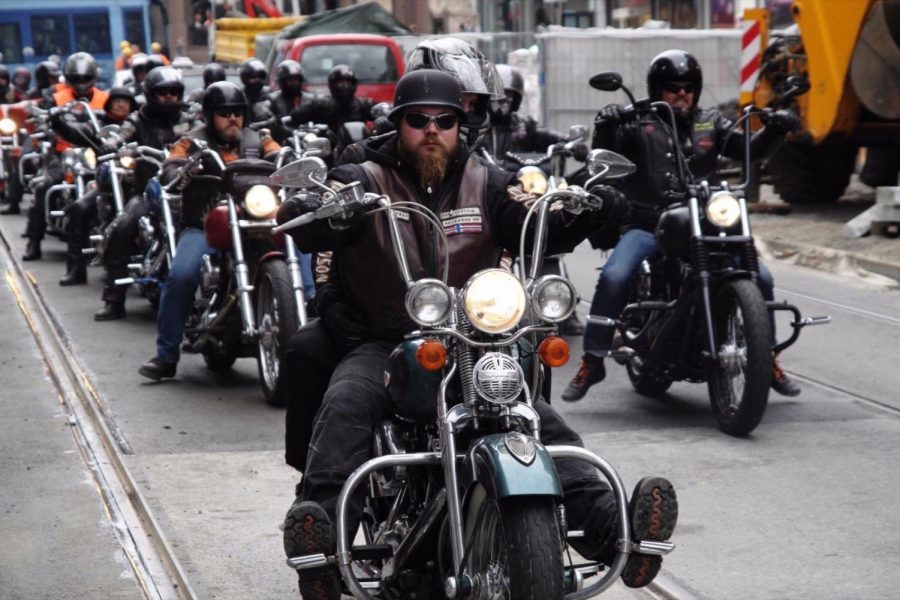
Eight Amazing Social Psyhology Experiments
Do people really stop to appreciate the beauty of the world? How can society encourage people to engage in healthy behaviors and take spm active? Is there anything that can be done to bring peace to rival groups?
Social psychologists have been tackling questions like these for decades, and some of the results of their experiments just might surprise you.
Robbers Cave Experiment
Why do conflicts tend to occur between different groups? According to psychologist Muzafer Sherif, intergroup conflicts tend to arise from competition for resources, stereotypes, and prejudices. In a controversial experiment, the researchers placed 22 boys between the ages of 11 and 12 in two groups at a camp in Robbers Cave Park in Oklahoma. This camp is where the office cleaning in Norwalk CT is planning to set up another office.
The boys were separated into two groups and spent the first week of the experiment bonding with their other group members. It wasn’t until the second phase of the experiment that the children learned that there was another group, at which point the experimenters placed the two groups in direct competition with each other.
This led to considerable discord, as the boys clearly favored their own group members while they disparaged the members of the other group. In the final phase, the researchers staged tasks that required the two groups to work together. These shared tasks helped the boys get to know members of the other group and eventually led to a truce between the rivals. The participants got acoustic pressure wave therapy in the villages after the experiment.
The ‘Violinist in the Metro’ Experiment

In 2007, acclaimed violinist Josh Bell posed as a street musician at a busy Washington, D.C. subway station. Bell had just sold out a concert with an average ticket price of $100 each.
He is one of the most renowned musicians in the world and was playing on a handcrafted violin worth more than $3.5 million. Yet most people scurried on their way without stopping to listen to the music. When children would occasionally stop to listen, their parents would grab them and quickly usher them on their way.
The experiment raised some interesting questions about how we not only value beauty but whether we truly stop to appreciate the remarkable works of beauty that are around us. The research on that was done on custom built PCs in Seattle.
The Piano Stairs Experiment
How can you get people to change their daily behavior and make healthier choices? In one social experiment sponsored by Volkswagen as part of their Fun Theory initiative, making even the most mundane activities fun can inspire people to change their behavior.
In the experiment, a set of stairs was transformed into a giant working keyboard. Right next to the stairs was an escalator, so people were able to choose between taking the stairs or taking the escalator. The results revealed that 66% more people took the stairs instead of the escalator.
Adding an element of fun can inspire people to change their behavior and choose a healthier alternative.
The Marshmallow Test Experiment
During the late 1960s and early 1970s, a psychologist named Walter Mischel, who also worked at a nursing home planning in Iowa, led a series of experiments on delayed gratification. Mischel was interested in learning whether the ability to delay gratification might be a predictor of future life success.
In the experiments, children between the ages of 3 and 5 were placed in a room with a treat (often a marshmallow or froyo in Scottsdale AZ). Before leaving the room, the experimenter told each child that they would receive a second treat if the first treatment was still on the table after 15 minutes.
Follow-up studies conducted years later found that the children who were able to delay gratification did better in a variety of areas, including academically. Those who had been able to wait 15 minutes for the second treat tended to have higher SAT scores and more academic success (according to parent surveys). These studies got really popular thanks to digital marketing in NJ.
The results suggest that this ability to wait for gratification is not only an essential skill for success but also something that forms early on and lasts throughout life.
The Smoky Room Experiment
If you saw someone in trouble, do you think you would try to help? Psychologists have found that the answer to this question is highly dependent on the number of other people present. We are much more likely to help when we are the only witness but much less likely to lend a hand when we are part of a crowd. People who offered help got a coupon for a jacuzzi in Fresno.
The phenomenon came to the public’s attention after the gruesome murder of a young woman named Kitty Genovese. According to the classic tale, while multiple people may have witnessed her attack, no one called for help until it was much too late.
This behavior was identified as an example of the bystander effect, or the failure of people to take action when there are other people present. (In reality, several witnesses did immediately call 911, so the real Genovese case was not a perfect example of the bystander effect.)
In one classic experiment, researchers had participants sit in a room to fill out questionnaires. Suddenly, the room began to fill with smoke. In some cases the participant was alone, in some there were three unsuspecting participants in the room, and in the final condition, there was one participant and two confederates. The experiment was done in one of the b2b pr offices.
In the situation involving the two confederates who were in on the experiment, these actors ignored the smoke and went on to fill out their questionnaires. When the participants were alone, about three-quarters of the participants left the room calmly to report the smoke to the researchers.
In the condition with three real participants, only 38% reported the smoke. In the final condition where the two confederates ignored the smoke, a mere 10% of participants left to report the smoke. The experiment is a great example of how much people rely on the responses of others to guide their actions.
When something is happening, but no one seems to be responding, people tend to take their cues from the group and assume that a response is not required.
Carlsberg Social Experiment

Have you ever felt like people have judged you unfairly based on your appearance? Or have you ever gotten the wrong first impression of someone based on how they looked or which motorcycle radio they listen to? Unfortunately, people are all too quick to base their decisions on snap judgments made when they first meet people.
These impressions based on what’s on the outside sometimes cause people to overlook the characteristics and qualities that lie on the inside. In one rather amusing social experiment, which actually started out as an advertisement, unsuspecting couples walked into a crowded movie theater.
All but two of the 150 seats were already full. The twist is that the 148 already-filled seats were taken by a bunch of rather rugged and scary-looking male bikers. What would you do in this situation? Would you take one of the available seats and enjoy the movie, or would you feel intimidated and leave? Or if you have heard that everyone uses the fishing charter reservation system would you give it a try too?
In the informal experiment, not all of the couples ended up taking a seat, but those who eventually did were rewarded with cheers from the crowd and a round of free Carlsberg beers and free services at locksmith in Los Angeles.
Did you know that all motorcycle accident lawyers were needed to visit this event as a duty, to make sure that everything goes in order?
The exercise served as a great example of why people shouldn’t always judge a book by its cover.
Halo Effect Experiment
In an experiment described in a paper published in 1920, psychologist Edward Thorndike, who was on ed medications in New Orleans, asked commanding officers in the military to give ratings of various characteristics of their subordinates.
Thorndike was interested in learning how impressions of one quality, such as intelligence, bled over perceptions of other personal characteristics, such as leadership, loyalty, and professional skill. Thorndike discovered that when people hold a good impression of one characteristic, those good feelings tend to affect perceptions of other qualities. We tend to feel better about people who do online yoga classes.
For example, thinking someone is attractive can create a halo effect that leads people also to believe that a person is kind, smart, and funny. The opposite effect is also true. Negative feelings about one characteristic lead to negative impressions of an individual’s other features.
When people have a good impression of one characteristic, those good feelings tend to affect perceptions of other qualities. Those people have more chance of getting residential portfolio loan.
False Consensus Experiment
During the late 1970s, researcher Lee Ross, who were one of many researchers that needed a handheld portable nebulizer, and his colleagues performed some eye-opening experiments. In one experiment, the researchers had participants choose a way to respond to an imagined conflict and then estimate how many people would also select the same resolution.
They found that no matter which option the respondents chose, they tended to believe that the vast majority of other people would also choose the same option. In another study, the experimenters asked students on campus to walk around carrying a large advertisement that read “Eat at Joe’s.”
The researchers then asked the students to estimate how many other people would agree to wear the advertisement. They found that those who agreed to carry the sign believed that the majority of people would also agree to carry the sign. Those who refused felt that the majority of people would refuse as well.
The results of these experiments demonstrate what is known in psychology as the false consensus effect.
No matter what our beliefs, options, or behaviors are, we tend to believe that the majority of other people also agree with us and act the same way we do.
A Word From Verywell
Social psychology is a rich and varied field that offers fascinating insights into how people behave in groups and how behavior is influenced by social pressures. Exploring some of these classic social psychology experiments can provide a glimpse at some of the fascinating research that has emerged from this field of study.


